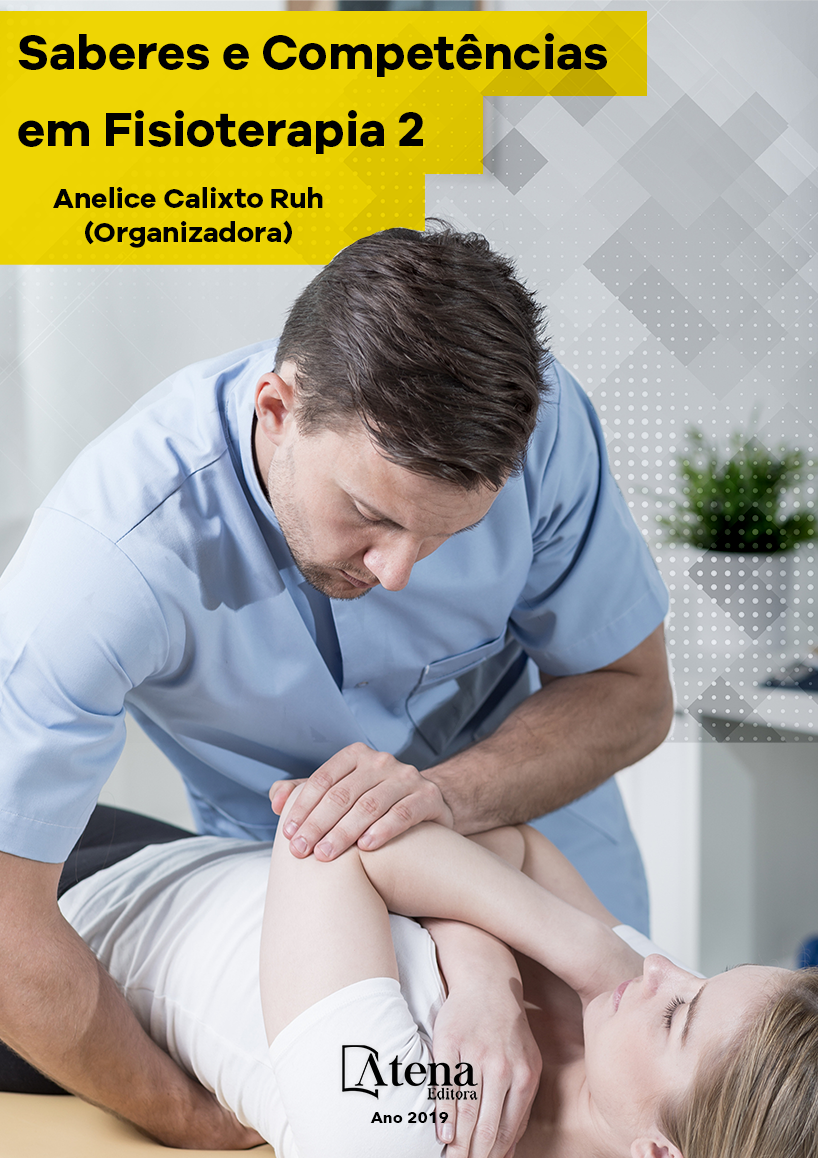
UTILIZAÇÃO DA ROBÓTICA DE MEMBROS SUPERIORES EM PACIENTES PÓS ACIDENTE VASCULAR CEREBRAL CRÔNICO
Introdução: Os déficits motores
frequentemente observados em pacientes pós
acidente vascular cerebral (AVC), levam ao
não-uso aprendido do membro superior afetado
pela lesão, interferindo em suas atividades
da vida diária. A utilização da robótica na
reabilitação tem mostrado efeitos positivos,
proporcionando uma melhor especificidade
de treinamento, repetição, integrando visão
e propriocepção, reduzindo o esforço durante
a terapia. Objetivos: (1) avaliar os efeitos do
treinamento robótico no desempenho funcional,
força muscular e parametrização na reabilitação
do membro superior afetado de pacientes pós-
AVC em fase crônica; (2) verificar a manutenção
dos resultados por até um ano. Metodologia:
Foram coletados dados dos pacientes
submetidos a intervenção robótica (InMotion®),
no período de novembro / 2014 a novembro /
2015, no Setor de Terapia Ocupacional Adulto da
Associação de Assistência à Criança Deficiente
– Ibirapuera (n=8). Para avaliar os efeitos da
intervenção foi utilizada a Escala Fugl Meyer
(membro superior), força muscular de ombro
e parametrização. Para análise dos resultados
foi utilizado o teste de Wilcoxon, adotandose
a significância de p≤0,05. Resultados: Os
pacientes apresentaram melhora significativa
na Escala Fugl Meyer (p<0,02) e aumento na
pontuação da extremidade superior de punho
e mão, mostrando melhora no desempenho do
membro superior, o qual foi mantida no follow-up.
Considerações Finais: O estudo demonstrou
que a terapia robótica proporcionou efeitos
positivos na reabilitação de membros superiores
em pacientes pós-AVC com comprometimentos
de moderados à graves na fase crônica, e
os resultados também sugerem, de maneira
qualitativa, uma diminuição nos movimentos
sinérgicos e melhora na força muscular do
membro acometido.
UTILIZAÇÃO DA ROBÓTICA DE MEMBROS SUPERIORES EM PACIENTES PÓS ACIDENTE VASCULAR CEREBRAL CRÔNICO
-
DOI: 10.22533/at.ed.18719140421
-
Palavras-chave: Acidente vascular cerebral; Reabilitação do Acidente Vascular Cerebral; Extremidade Superior; Terapia Ocupacional; Fisioterapia.
-
Keywords: Upper Extremity, Rehabilitation Robotics, Stroke
-
Abstract:
Background: Motor deficits frequently observed in post-stroke patients
lead to non-use of the affected upper limb by the injury, interfering with their activities
of daily living. The use of robotics in rehabilitation has shown positive effects, providing
better training specificity, repetition, integrating vision and proprioception, reducing effort
during therapy. Objectives: (1) to evaluate the effects of robotic training on functional
performance, muscle strength and parameterization in the rehabilitation of affected
upper limbs of post-stroke patients in chronic phase; (2) verify the maintenance of results
for up to one year. Methodology: Data from patients submitted to robotic intervention
(InMotion®) from November / 2014 to November / 2015, in the Adult Occupational
Therapy Sector of the Association for Assistance to the Deprived Child - Ibirapuera (n
= 8) were collected. To evaluate the effects of the intervention, the Fugl Meyer Scale
(upper limb), shoulder muscle strength and parameterization were used. Wilcoxon test
was used to analyze the results, adopting the significance of p≤0.05. Results: Patients
showed a significant improvement in the Fugl Meyer Scale (p <0.02) and an increase
in the upper hand and wrist endpoint, showing improvement in the performance of the
upper limb, which was maintained at follow-up. Conclusion: The study demonstrated
that robotic therapy provided positive effects on upper limb rehabilitation in post-stroke
patients with moderate to severe impairment in the chronic phase, and the results also
qualitatively suggest a decrease in synergistic movements and improvement muscle
strength of the affected limb.
-
Número de páginas: 15
- Danielle Mayumi Takeishe Ossanai
- Gabriela da Silva Matuti
- Eleanora Vitagliano
- Rafael Eras Garcia


